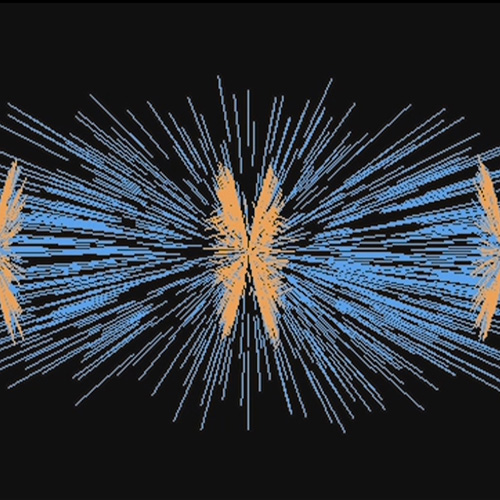





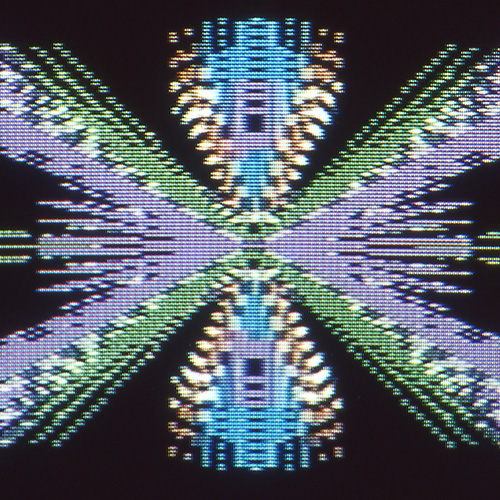
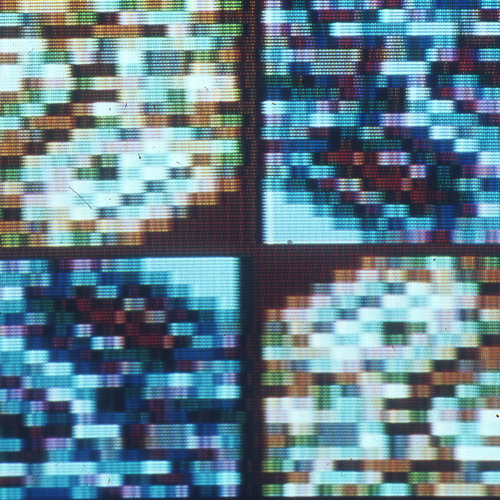
DOS Computer Programs (starting 1983)
From 1983, Herbert W. Franke also worked with a DOS computer 286, which was later replaced by a DOS computer 486, a donation by Compaq in the year 1984. A large number of programs was developed using these computers, two of which serve here as important examples for different coding aspects.
The program GraMus (already conceived for the apple II under the name Mikado as a randomised, endlessly running program, which Franke also adapted for the DOS system in the mid-eighties), derives its name from the two words graphics and music. Developed with Quick-Basic on a Compaq 486. Another version could be used by controlling the program by music via a midi interface. The third version allowed interactivity like a DJ. The user could change colors and other program parameters during the ongoing animation. A documentation of this function can be seen in the video below, which was produced in an emulation of the program at the beginning of the new millennium with Franke at the computer keyboard. The sound was generated by Franke’s own electronic sound keyboard.

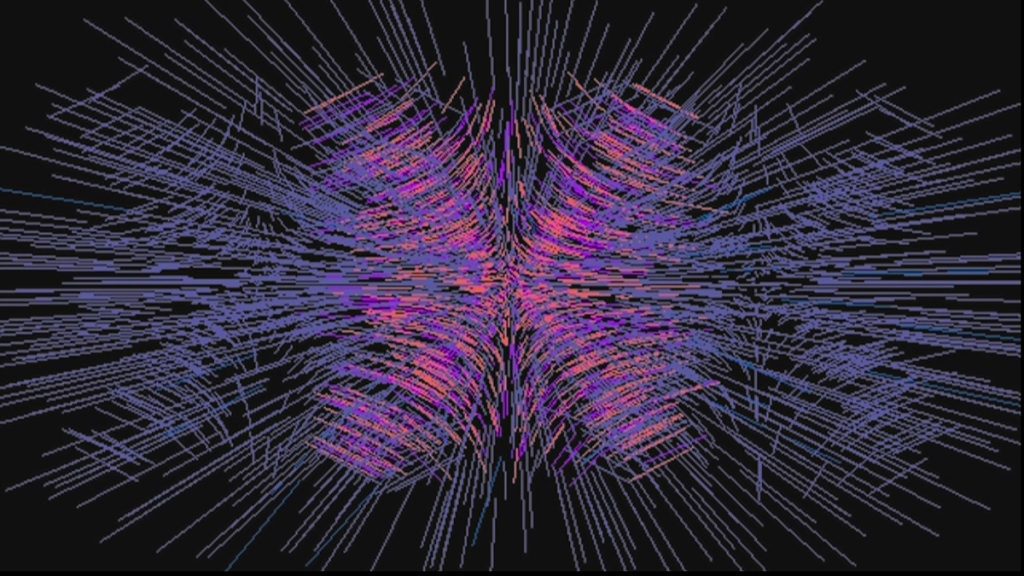

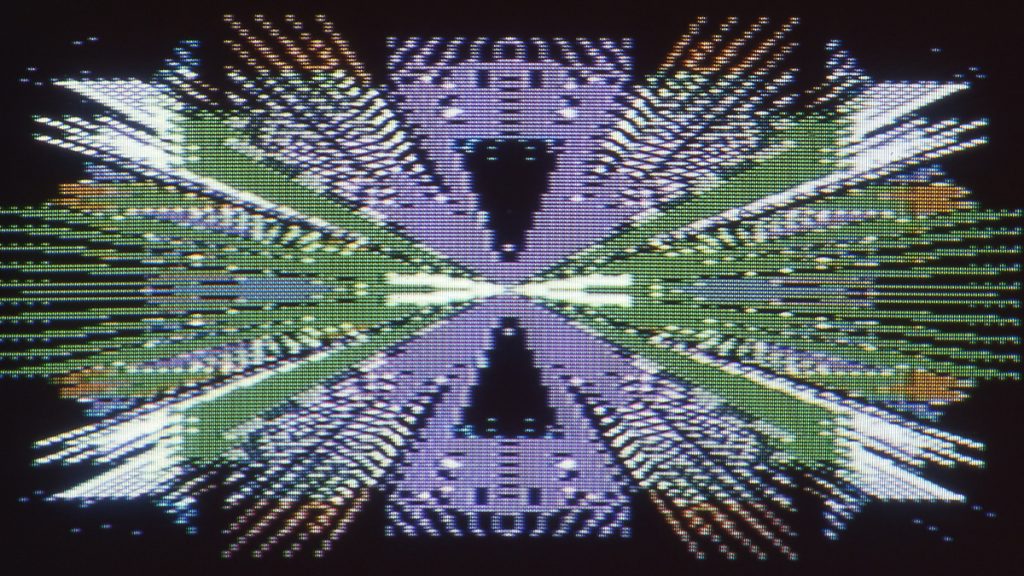
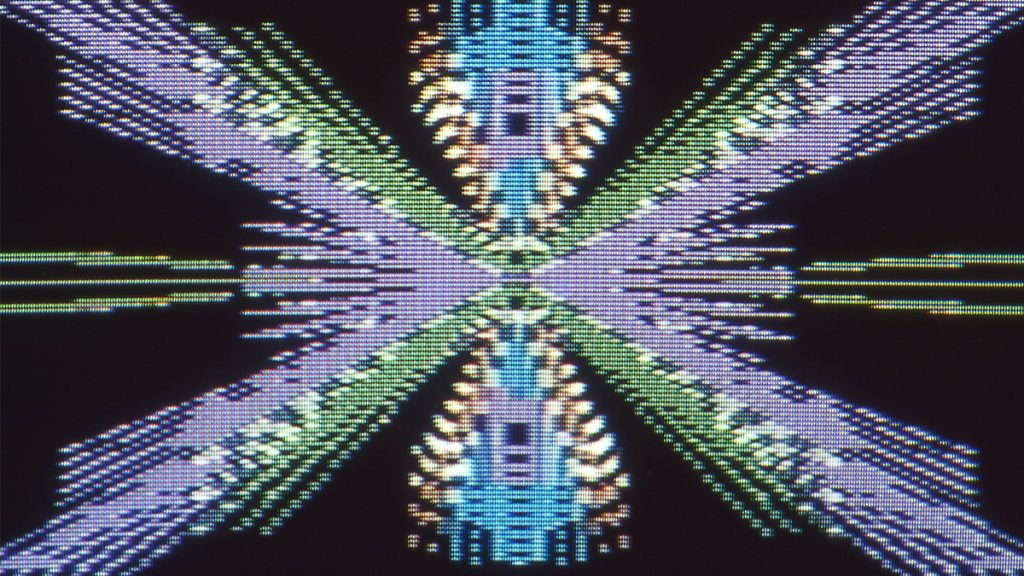
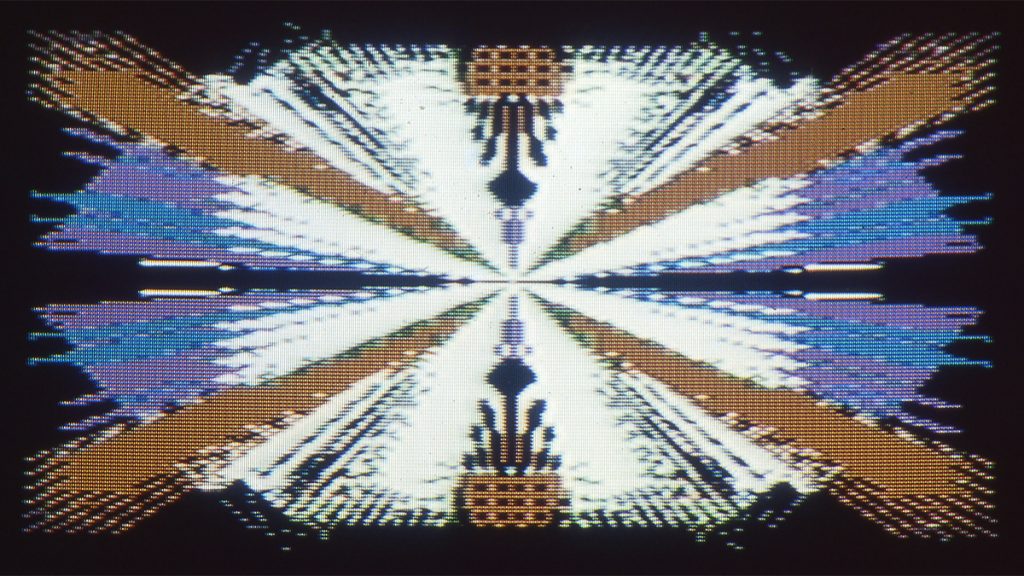
The Algebra and Logic (Logik) programs from 1987 are based on the visualisation of mathematical relationships. In Algebra, functions such as z = x2 – y were studied for their visual structures, in Logic, the conjunctions “and” and “or” were analysed as part of the preliminary work for the comprehensive body of work, Math Art. The programmes were created with Q-Basic for a Compaq DOS computer with an Intel 486 processor.

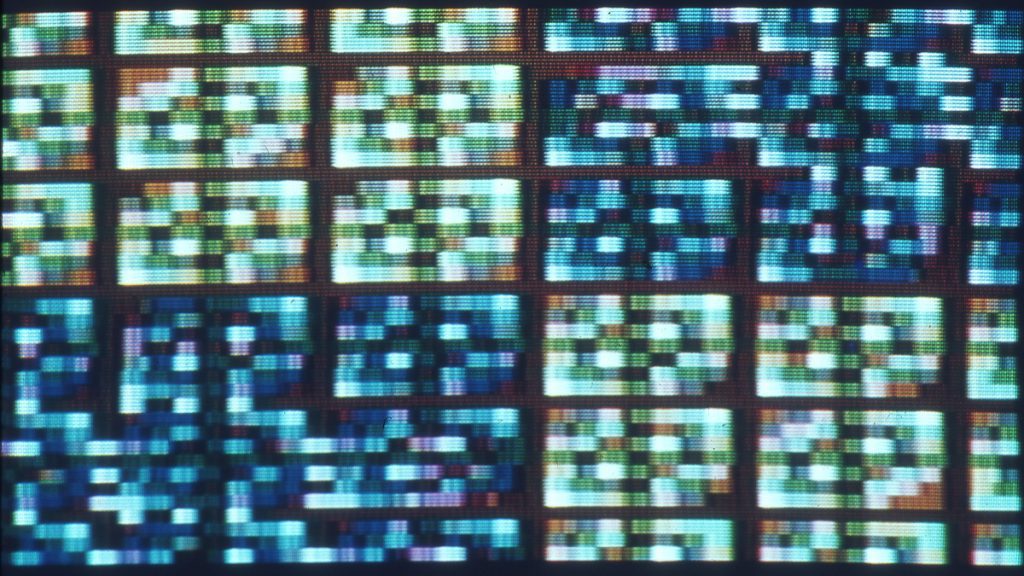

Click here for the other series in the body of work: Personal Computer:
DEC Professional 350 programmes
Phantastic Worlds series
Cellular Automata programs

